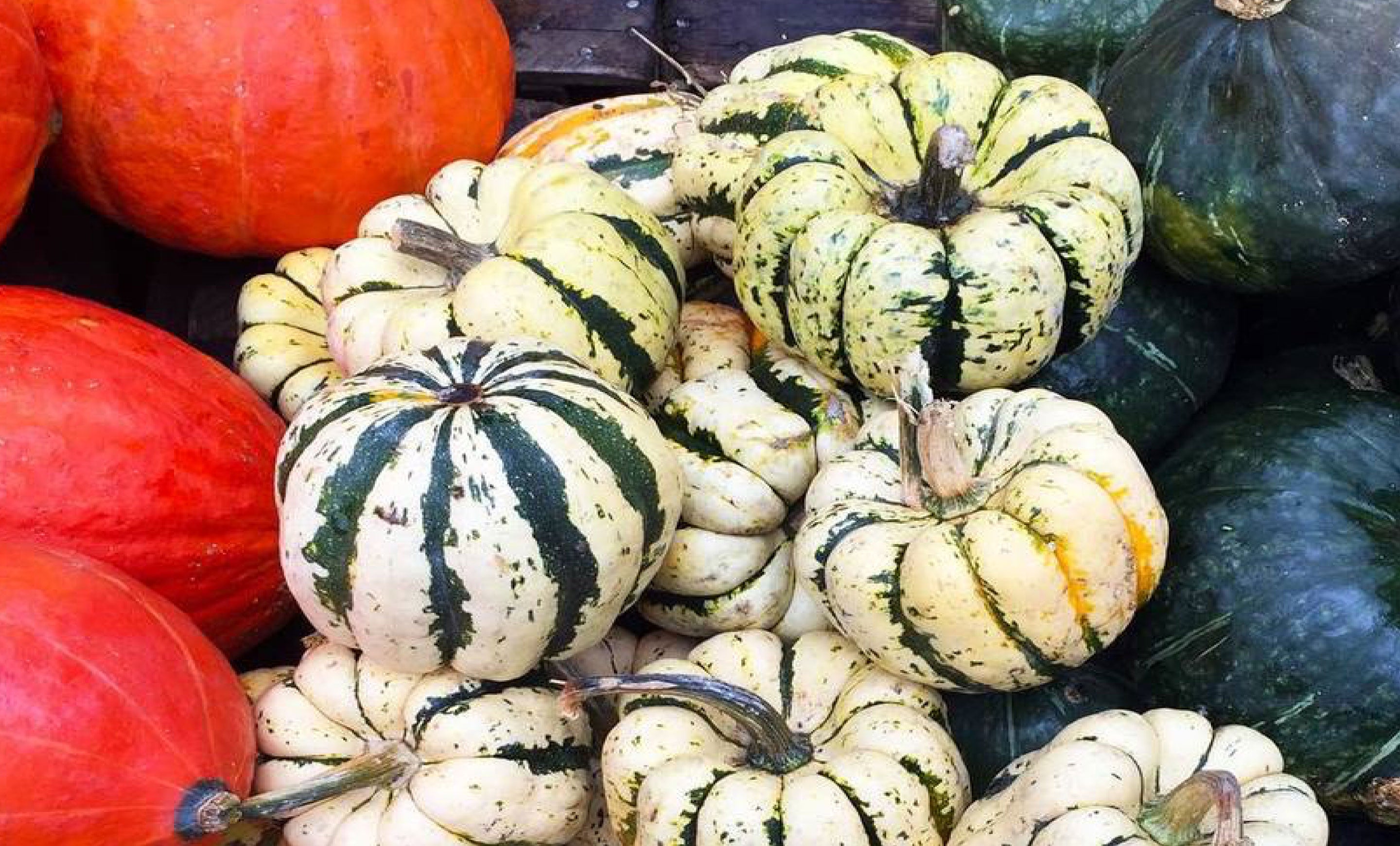The cooling weather and changing leaves are indicators to switch up the produce on our plates. Fall is brimming with fruits and vegetables chock full of vitamins and minerals that can be prepared in creative ways in the kitchen. Roasted, pureed into soups or baked into muffins, these are ten fall super foods you don’t want to miss out on.
Butternut Squash
Butternut Squash is loaded with beta-carotene, a plant pigment that our body converts to vitamin A. Vitamin A is important for vision, eye health and skin. This veggie blends seamlessly into velvety soups and makes the perfect makeshift bowl for protein and veggies. Because beta-carotene is best absorbed in the presence of healthy fat, don’t forget to pair your squash with a little oil like olive or avocado.
Brussels Sprouts
One serving of brussels sprouts exceeds your daily vitamin K and vitamin C needs. Brussels sprouts can pull together any fall menu whether they are prepared sweet or savory. If you like a little of both, try maple roasted brussels sprouts with bacon bits for a decadent fall appetizer.

Cauliflower
This cruciferous veggie can be made into rice and enjoyed as a light, high-fiber base for soups and stir-fries. Prefer mashed potatoes over rice? No problem. This veggie can be blended with milk and butter to create a low-carb mash to accompany your crockpot chicken on busy weeknights.
Pomegranates
Small in size but loaded with antioxidants. Pomegranate arils are a good source of vitamin C and fiber. This antioxidant powerhouse goes great in homemade salad dressings, sprinkled on top of a salad or garnished on morning oatmeal.

Apples
An apple a day may keep the dietitian away! With over 7000 varieties, it is hard to pick a favorite. Apples vary in sweetness, tartness, color and texture. While Granny Smith apples go great in pie, Golden Delicious apples are known to make a killer cider. A good source of fiber and vitamin C, they are an easy addition to a lunch box or fall dessert.
Parsnips
Swap potato fries for parsnip fries. This root veggie resembles a carrot in appearance but has a nuttier taste. Besides its fiber content being a nutrition standout, parsnips also boast vitamin C, which is important collagen production and skin health.
Cabbage
If you are looking to add some crunch to your fall salad, cabbage is the answer. This fall vegetable may look and taste like iceberg lettuce but it rivals it on the nutrient front. Whether you prefer the red or green variety, cabbage is sure to up your salad game several notches.
Pumpkin
It’s not fall without pumpkin! Besides carving them, pumpkins can be enjoyed in soups, stews and even baked goods. They are loaded with fiber, beta-carotene and just enough sweetness to elevate your fall quick breads and cookies.

Spaghetti Squash
Swap pasta for spaghetti squash this fall for a lower calorie, high nutrient alternative. Mild in taste, it’s the perfect vehicle for your bolognese sauce or homemade pesto. Roast it whole in the oven to soften the strands or even microwave the squash after poking a few holes, if you are in a hurry.

Mushrooms
Swap mushrooms for meat on your next meatless Monday. Portabellas have a meaty texture and can be made into burgers, taco filling or added to pasta sauce. Although mushrooms are typically prepared as a vegetable, they are actually fungi and one of the only plant-based sources of vitamin D, the sunshine vitamin that is vital for bone health.






